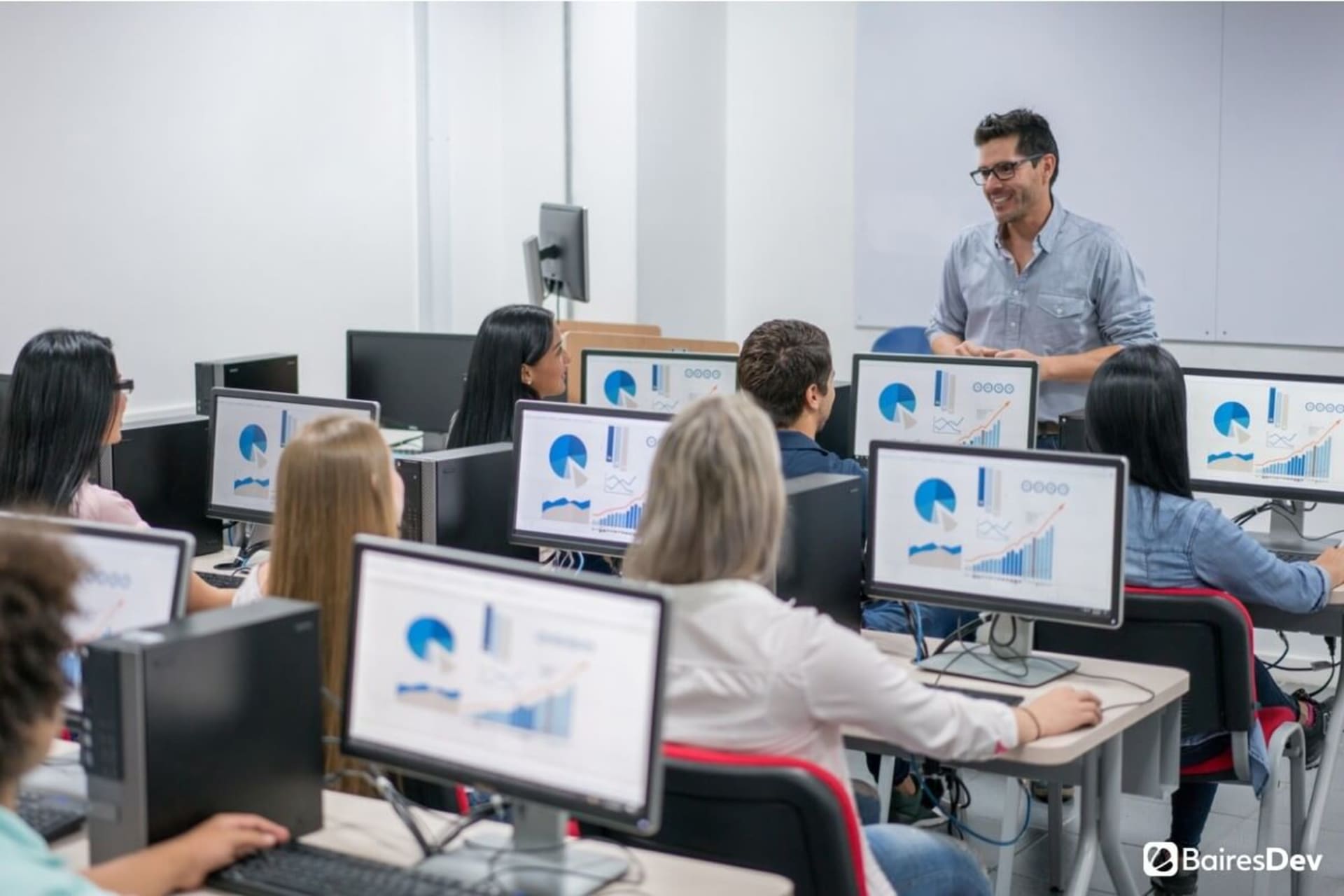EdTech was already having its momentum in the pre-pandemic days, but it certainly took the spotlight once COVID-19 struck. In fact, EdTech was essential for the sector to face the challenges brought about by the crisis. Thanks to the implementation of technology across schools and colleges, hundreds of millions of students had the possibility to continue their education in times of lockdowns and stay-at-home orders.
Some might see that increment in EdTech popularity as a temporary shift until the situation goes back to normal and students can go back to school. Yet, as it happens with virtually all the sectors impacted by the pandemic, it’s unlikely that education will ever be the same. What’s more, EdTech has only room to grow from now on, especially because the post-COVID-19 world provides several opportunities.
Sure, that doesn’t mean that EdTech will have it easy. There are as many challenges as there are opportunities, so people in the education sector should try to leverage the possibilities without losing sight of the potential obstacles and complications along the way. What can they expect? Let’s review some of the chances of EdTech in the post-COVID-19 world.
Opportunities for EdTech
Blended Learning Approaches
Defendants of traditional face-to-face education criticize online learning because it lacks the possibility of closely monitoring and mentoring children. On the other hand, EdTech enthusiasts say that digital learning is more interactive and, therefore, more engaging for students. While you could argue that either of them is right, it’s always best to find a synthesis and bring together the best of both worlds.
Thus, EdTech can potentiate traditional education by introducing highly interactive elements both in classrooms and in remote settings. Just like it happens with companies and hybrid work, the education sector could embrace a hybrid method as well and experiment with different approaches to learning. It remains to be seen whether that blend would work or what it would look like. Yet, the possibility is there, and all thanks to EdTech.
Improved Teaching and Learning Materials
I said it above but I’ll say it again—EdTech provides digital tools that can be more engaging than traditional learning resources. By adopting a variety of technologies (from gamified platforms to VR devices), educators can enrich their courses and create a new learning environment for their students. This can lead to highly improved materials for students to learn from.
Using digital technologies for educational purposes in this way can provide wider access to more students while also paving the way for people of different backgrounds to engage with learning materials in different ways. Having that variety of materials can boost the entire learning experience and provide a new way of teaching that would be impossible with traditional methods and resources.
Personalized Learning Experiences
With a blended approach and better learning materials, educational institutions will have the ability to customize their classes to meet the needs of each individual. For example, educational platforms can gather data about each student to identify the pain points in their learning journey and provide them with extra resources to sort them out. Technology could also suggest better paths for the development of each student depending on customizable criteria.
Sounds like a fantasy? Far from it! These and other possibilities are already starting to pop up in the most sophisticated learning environments powered by EdTech. Take Instructure, one of the clients we’re empowering in the education sector. Their Canvas platform allows educators to thoroughly define their teaching programs according to the data they gather from their students. Everything is customizable and easily accessible for both teachers and students. Learn more about it in our success story and see how personalized learning is already a reality.
Increased Teacher Collaboration
One of the biggest benefits of using technology in any activity is how easy it’s to connect with other people through it. That’s fantastic for education, as technology makes it very simple to share information, materials, and resources across educational institutions. This is a huge opportunity for the sector, which would be impossible without EdTech.
Digital learning platforms help streamline the collaboration between different teachers, even if they don’t work in the same institution. This allows for the creation of a vast educational network that transcends the boundaries of a specific school or college and brings together the collective knowledge and resources of different educators. This opportunity to boost collaboration can certainly redefine education as we know it today, simply because it can provide access to new perspectives while democratizing education through the wider availability of all sorts of educational materials.
A Challenging Yet Rewarding Journey
All the possibilities are there thanks to EdTech. Unfortunately, it’ll take more than just the time and effort to adopt EdTech solutions across our educational institutions. There are some challenges waiting to be resolved before we can truly see the benefits of EdTech in their full splendor.
For instance, there’s the possibility that educational technology can widen the equity gap between students who can access the necessary devices for this EdTech-powered approach and those who can’t. Also, educators would do well to analyze the consequences that remote learning might have on their students, including feelings of isolation and loneliness. Finally, there’s always the risk of over-relying on EdTech solutions, which can lead teachers to relax and trust that platforms will do all the heavy lifting for themselves.
I think the greatest challenge, though, is believing that EdTech is some sort of magical solution whose only presence can immediately and irrevocably change education for good. Unfortunately, that’s not the case. Moving forward with an EdTech approach requires careful planning and consideration of both possibilities and obstacles. Education was never an easy practice, and while technology can certainly help make it easier, it still calls for complex strategies for success.
What I’m trying to say is that educators shouldn’t be blinded by the possibilities of EdTech. The benefits are there and are certainly achievable, but so are the risks. The post-COVID-19 world offers the education sector the chance to reinvent itself and adapt to the new normal. But the only way for that to happen is to understand that education is going through a transitional phase that will need all its actors to put in their best efforts to leverage those opportunities.







